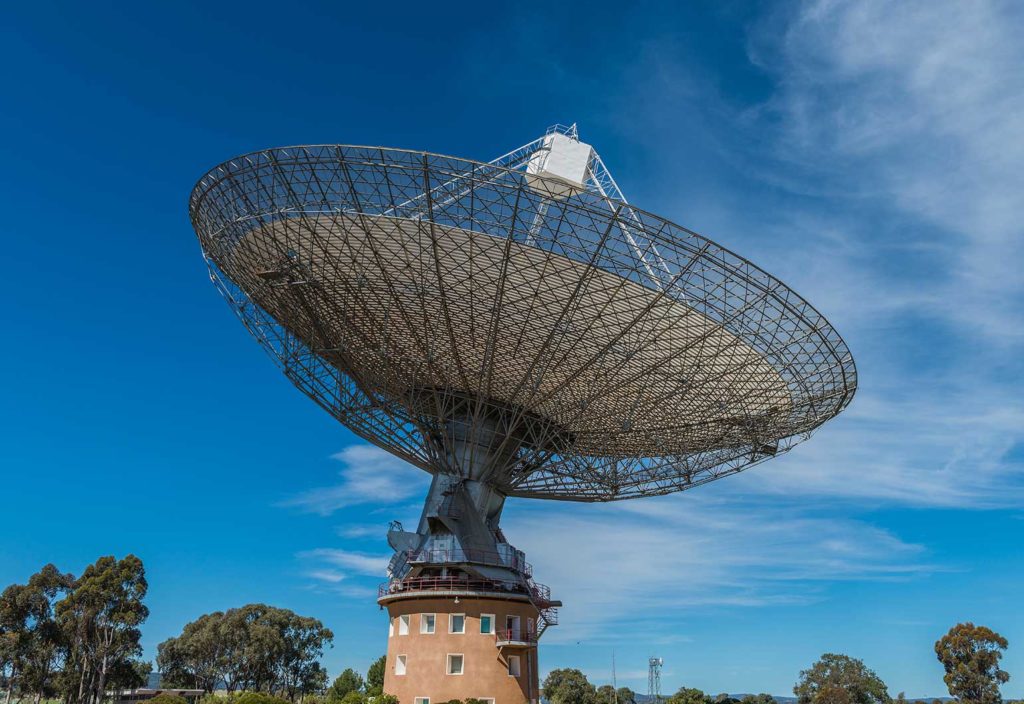Australia’s most famous telescope has been awarded National Heritage status, making it the 118th site to be added to the list of natural, historic and Indigenous places of outstanding significance.
Renowned for its role in the 1969 Apollo 11 mission moon landing and immortalised on screen in the Australian film The Dish (2000), the CSIRO Parkes Observatory is the first functioning scientific instrument to be granted this status.
“The Parkes Telescope was built at a time when Australia was emerging as a global leader in the ground-breaking field of radio astronomy, and most famously played an integral role in man walking on the moon,” said Minister for Industry, Science and Technology Karen Andrews.
“The Dish is part of Australia’s proud cultural and scientific history and to this day continues to serve as an important tool in our understanding of the universe.”
Developing the Dish
Australia got off to a good start in radio astronomy just after World War II, with staff at the CSIRO Radiophysics Laboratory using wartime equipment such as radio-receiving antennas to study radio waves. But by the late 1940s and early 1950s, the country was ready for a more strategic approach.
The first proposal to build Australia’s radio astronomy credentials was to construct a large air-warning antenna that would double as a radio telescope. There was also a plan to build a wooden antenna about 30.5 metres in diameter, rotating on a track. However, to make these, or any other ideas, come to life, the CSIRO needed cash.

Funding ultimately came from the Carnegie Corporation, the Rockefeller Foundation and the Australian Federal Government. The engineering design for the telescope was done by Freeman Fox, the same firm responsible for designing the Sydney Harbour Bridge. Barnes Wallis, then the Chief Engineer of Vickers, was also involved in the design.
Construction began in 1959 in Parkes, New South Wales — a site chosen as it was accessible from Sydney but far enough away to be shielded from the city’s radio noise. The telescope was officially opened on the 31 October 1961.
To the moon… and beyond
Most famously, the 64-metre diameter radio astronomy telescope played a key role in the 1969 moon landing, receiving the television signals from the Apollo 11 mission and relaying them to 600 million people across the world.
However, the telescope continues to be an important tool for Australian and international astronomers today, and remains at the cutting edge of radio astronomy. While its basic structure remains unchanged, the surface, control system, focus cabin, receivers, computers and cabling have been continually upgraded over the years, resulting in a telescope 10,000 times more sensitive than when it was built.
Pinpointing pulsars and tracking spacecraft
As one of the largest single-dish telescopes in the southern hemisphere dedicated to astronomy, one of the radio telescope’s key roles is in finding pulsars, or rapidly spinning neutron stars the size of a small city. In fact, half of the 2,000 plus known pulsars have been found using the Parkes telescope.
Over the past sixty years the telescope has also been contracted by NASA and other international space agencies to track and receive data from spacecraft, including in 1970 when it was called in to help during the Apollo 13 emergency, and in 2012 when it played a support role in tracking NASA’s Curiosity Mars rover.
“Australia has a long and proud history of science-driven innovation, from our first digital computer, CSIRAC, to the first air defence radar, which helped to pave the way for the new field of radio astronomy after World War II, and more recently the development of fast wi-fi that connects people across the world to the internet,” said CSIRO Chief Executive Dr Larry Marshall.
“While the Parkes telescope may be old enough to qualify for the National Heritage List, it continues to operate as one of the world’s leading astronomy instruments, observing the universe day and night, seven days a week, with the most advanced radio receiver systems in the world.”
